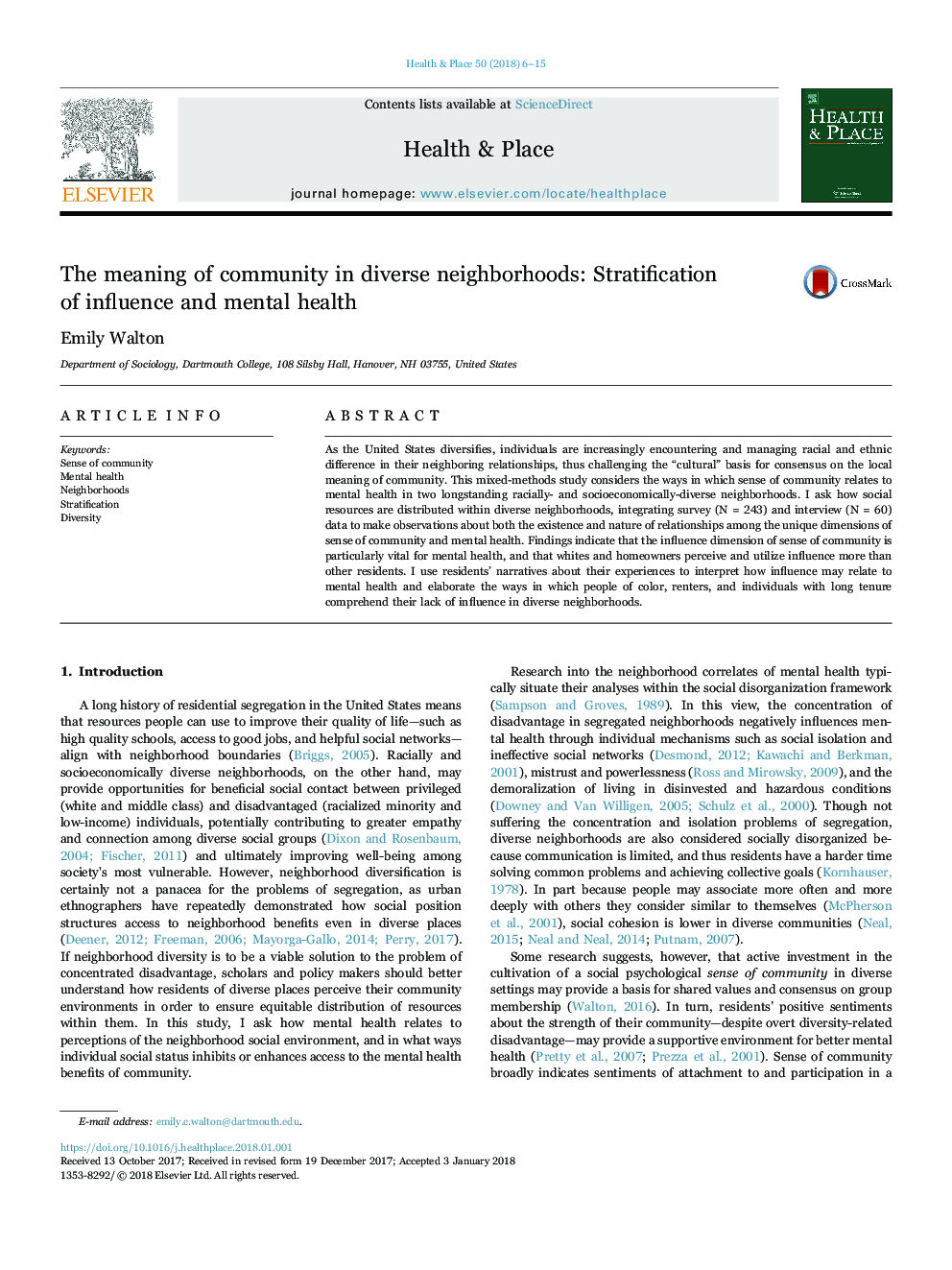| Article ID | Journal | Published Year | Pages | File Type |
|---|---|---|---|---|
| 7456953 | Health & Place | 2018 | 10 Pages |
Abstract
As the United States diversifies, individuals are increasingly encountering and managing racial and ethnic difference in their neighboring relationships, thus challenging the “cultural” basis for consensus on the local meaning of community. This mixed-methods study considers the ways in which sense of community relates to mental health in two longstanding racially- and socioeconomically-diverse neighborhoods. I ask how social resources are distributed within diverse neighborhoods, integrating survey (N = 243) and interview (N = 60) data to make observations about both the existence and nature of relationships among the unique dimensions of sense of community and mental health. Findings indicate that the influence dimension of sense of community is particularly vital for mental health, and that whites and homeowners perceive and utilize influence more than other residents. I use residents' narratives about their experiences to interpret how influence may relate to mental health and elaborate the ways in which people of color, renters, and individuals with long tenure comprehend their lack of influence in diverse neighborhoods.
Related Topics
Health Sciences
Medicine and Dentistry
Public Health and Health Policy
Authors
Emily Walton,
